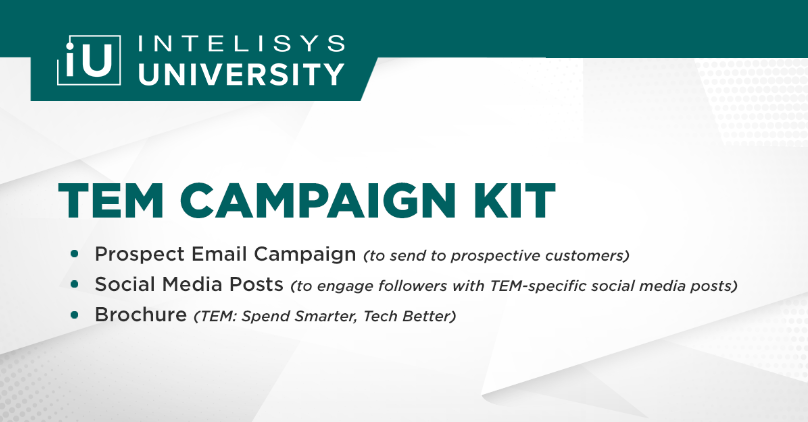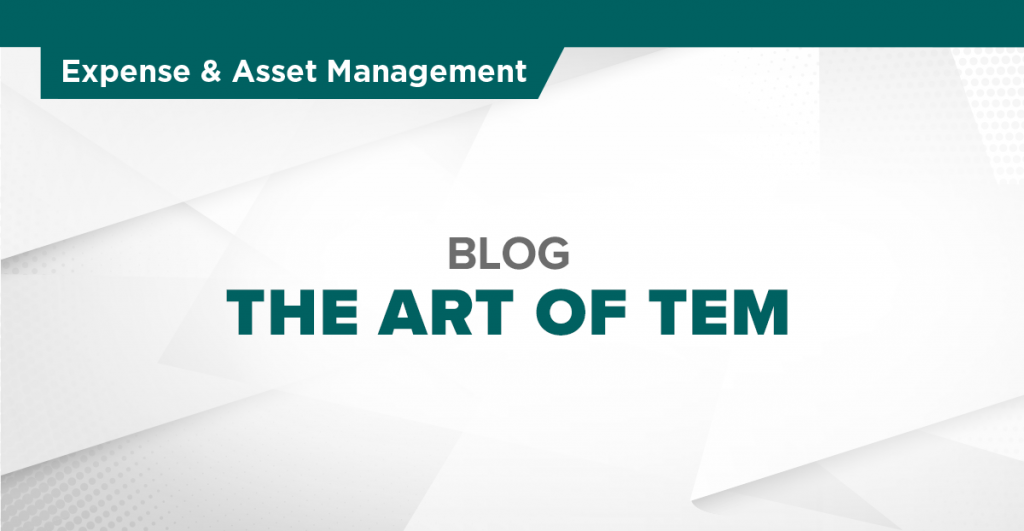
Since the pandemic, we’ve lived through a period of rapid digitalization – and that trend is likely to continue. Companies are moving away from office buildings and towards remote work. As they consolidate that transition, they’ll spend more than ever on technology.
But where is the money going? Are companies optimizing the allocation of tech-related resources? Where can they cut costs, and where can they make their spending more efficient? Those are the questions that TEM (Telecom Expense Management) can answer.
For Sales Partners, the TEM services within the Intelisys catalog are especially valuable. Not only will they become increasingly popular among customers, but they’ll also give you the information (and goodwill) you need to cross-sell other solutions.
Master the art of TEM, and you’ll become a true artisan in the eyes of your customers.
Key Terms
Before digging into the details, let’s define the terms at the heart of this conversation – starting, of course, with “TEM.”
TEM stands for “Technology Expense Management” or “Telecom Expense Management.” TEM solutions help companies manage their spending on technology.
But TEM is really an umbrella term. Some products within the TEM space use other acronyms, including:
- Expense Manager (EM)
- Utility Expense Manager (UEM)
- Cloud Expense Management (CEM)
- Expense Technology Management (ETM)
- Mobile Expense Management (MEM)
- FinOps
Whenever you encounter a product in the Intelisys catalog that uses one of these acronyms, you’re looking at a “TEM” solution.
Key Verticals
One reason TEM is so important for Sales Partners is that it’s relevant across verticals.
In any industry, companies will benefit from understanding their tech spend and making meaningful adjustments.
And in some cases, the benefits of TEM services extend beyond tech. While you’re in the weeds examining IT expenditures, you might happen upon other forms of waste (like utility bills for locations that don’t exist anymore).
Here’s how TEM services could be helpful for businesses in key verticals:
- Retail – For payroll, inventory, and utilities
- Hospitality – For supply spend, food cost, event cost, and mobility cost
- Healthcare – For patient resources, supply spend, and mobility cost
- Transportation – For fleet costs, travel expenses, fuel costs, resource costs, and toll costs
- Financial – For M&A, branch standardization, and tech sprawl
- Support – For ticketing requests, IT services, inventory, and warranty info
This is far from an exhaustive list. You can identify out-of-the-box use cases for TEM services in any vertical. Found a place where a client could benefit from tracking their spending? Then bring it up to them, and suggest a TEM solution.
How Does TEM Work?
TEM isn’t a plug-and-play product, but an actual service – meaning you’ll work with the supplier to onboard the client.
Here’s the 3-step process:
- You get a Letter of Authorization (LOA) from the client and give it to the supplier.
- The supplier uses APIs to pull vendor account information – including utilities, sources, and billing.
- In a portal provided by the supplier, you (along with the client) view and analyze information on the client’s tech spend. You can often integrate this portal with Power BI or another analytics dashboard, so you won’t have to open a separate application.
The portal could reveal all sorts of information about the company’s tech spend – and, naturally, the specifics will depend on the industry.
That said, you can expect a TEM service to provide insights on:
- Custom KPIs
- Trends over time
- Solution reports
- Archived data
- Account status
- Inventory status
- Warranties and end-of-life status
- Ticket history
To get an idea of how this all works, let’s zoom in on “inventory status” as a potential insight provided by a TEM solution. Lots of companies don’t realize what IT products and services they’re using. They also tend to lose track of expiring licenses and firewall solutions that have become out of date.
A TEM service will uncover all these issues – while also saving the company the time it would have taken to analyze their own inventory and find the issues themselves.
Using TEM to Build Relationships With Customers
TEM services are so valuable for Sales Partners because they help form lasting relationships with customers – and these relationships are the key to cross-selling.
When you guide a client through the process of using a TEM service, you’ll be acting less like a vendor and more like an extension of their team. Studying the information they’ve gathered will also help you uncover additional needs for the company.
Because remember, TEM isn’t just about cutting services – it’s also about consolidating, streamlining, and finding more efficient ways to use tech. And more often than not, this will involve buying new products.
Who will the company trust when it comes time to make new IT purchases?
Well, you’re already at the table – and you’ve earned a lot of goodwill by helping them understand their tech spend. That puts you in a prime position.
The TEM service will also give you insights into every aspect of the customer’s IT portfolio. That’s the kind of data that allows for some serious cross-selling. When you already know exactly what they need, it makes the sell a lot easier.
Next, let’s look at an example from Sales Partner Catherine Behrenbrinker.
During 7 years of implementing a TEM solution, she helped a company streamline their tech spend – which saved money while simplifying their accounting.
Check out the details:
- Before TEM: 457 invoices a month with a $17 million budget
- After TEM: 25 invoices with a $10 million budget
Unsurprisingly, these numbers made the Sales Partner popular with the customer. She’s become a trusted advocate – and her agency has signed 9 types of contracts with the company.
This cross-selling piece is key. The highest-selling Sales Partners tend to be the ones that have fewer customers but sell more technologies. In other words, selling more technologies to your existing customers is generally a better use of time than going out in search of more customers.
Mastering the art of TEM could be the catalyst for a new sales approach – an approach where you increase your number of technologies per customer.
More Resources From Intelisys University
For more insights about the power of TEM, watch our recent webinar on the subject from Intelisys University. There, you’ll find a list of killer entry-point questions to start a conversation about TEM with your customers.
And while you’re there, check out the additional resources on Intelisys University. You can learn to market yourself through email, social media, and brandable brochures.


